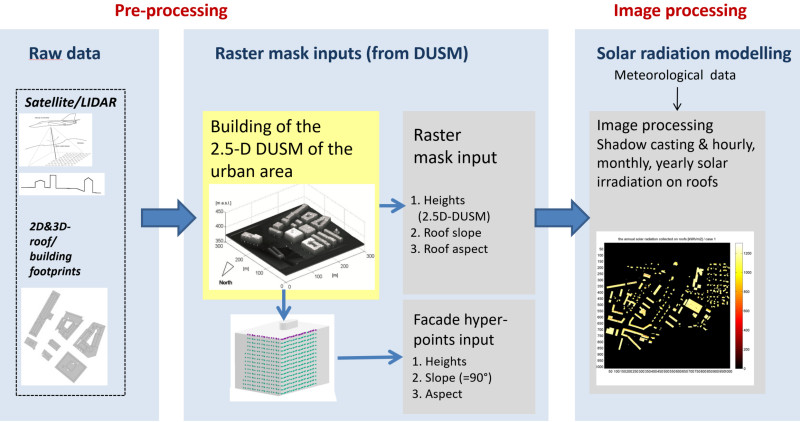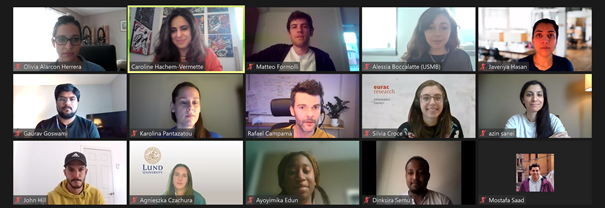Posted: November 1, 2021

Source: Stendardo, Desthieux et al., (2020): https://doi.org/10.3390/app10155361
A special “Fall School” for PhD and advanced master's students to enhance their knowledge of designing and implementing solar strategies in urban areas was offered by the IEA SHC Task 63 Solar Neighbourhood Planning in October. Dr. Caroline Hachem-Vermette from the University of Calgary, Canada, organised the course for 14 students from six different universities in Canada, Sweden, Norway, Italy and France. She also heads the subtask Solar Planning Strategies and Concepts within Task 63. The focal point of day 1 and 2 was the introduction and utilisation of different simulation tools. On day 3 and 4, pairs of students were asked to model a case study of their choice and on day 5 they delivered a final presentation.
To develop sustainable cities, simulation of neighbourhoods is becoming increasingly important in order to optimise energy efficiency and solar access. The process of simulating urban areas, however, is challenging and complex. It requires, for example, a high degree of detail at the building level (e.g. building envelope construction, HVAC equipment) and accurate designs of various types of building and of outdoor areas.

Screenshot during the Fall School Source: IEA SHC Task 63
That is why the IEA SHC Task 63 team chose the topic of simulation tools for this year’s Fall School. The course organisers aimed at enabling the students to estimate various key performance indicators such as solar potential of buildings and sites, output of solar technologies such as integrated PV systems, daylight factors and energy balances. Tools such as GIS (Geographic Information Systems) and the visual programming environment Grasshopper were introduced.
During the Fall School the students had the opportunity to practice using these tools, applying local climate and solar potential to extract various performance criteria. “The students were really creative and curious to learn more about applying methods and tools to analyse various aspects of the solar neighbourhood,” said Hachem-Vermette. For example, one group of students explored different methods of importing geographic data for existing neighbourhoods into energy analysis and simulation tools, and studied the impact of neighbourhood designs on solar access on facades and roofs, employing GIS tools (see following graph).

Final presentation of the group that worked on neighbourhood designs and their impact on solar radiation incidence on roofs and facades.
Graphic: G. Goswami and K. Pantazatou
Online format supported good interaction between students and instructors
“The online format was well-suited to the content of the course and facilitated the work with the tools”, summarised Hachem-Vermette. “It allowed not only good interaction between students and instructors but also made it possible to engage trainers from various research institutions.” Nine instructors from six different institutes were involved in delivering the theoretical and practical training.
The Fall School highlighted the workflow using different tools that support the complexity of neighbourhood simulations. Such methodologies in simulation and analysis of urban areas are not usually delivered in regular university or college courses as such courses usually focus on a specific tool to achieve a well-determined outcome.
According to Hachem-Vermette it could be worthwhile to reproduce the programme and the methodology of the Fall School in the form of condensed courses that could also be beneficial to professionals such as architects and planners. Professional teaching material could eventually be developed based on the training material used in this course.
Organisations mentioned in this news article: